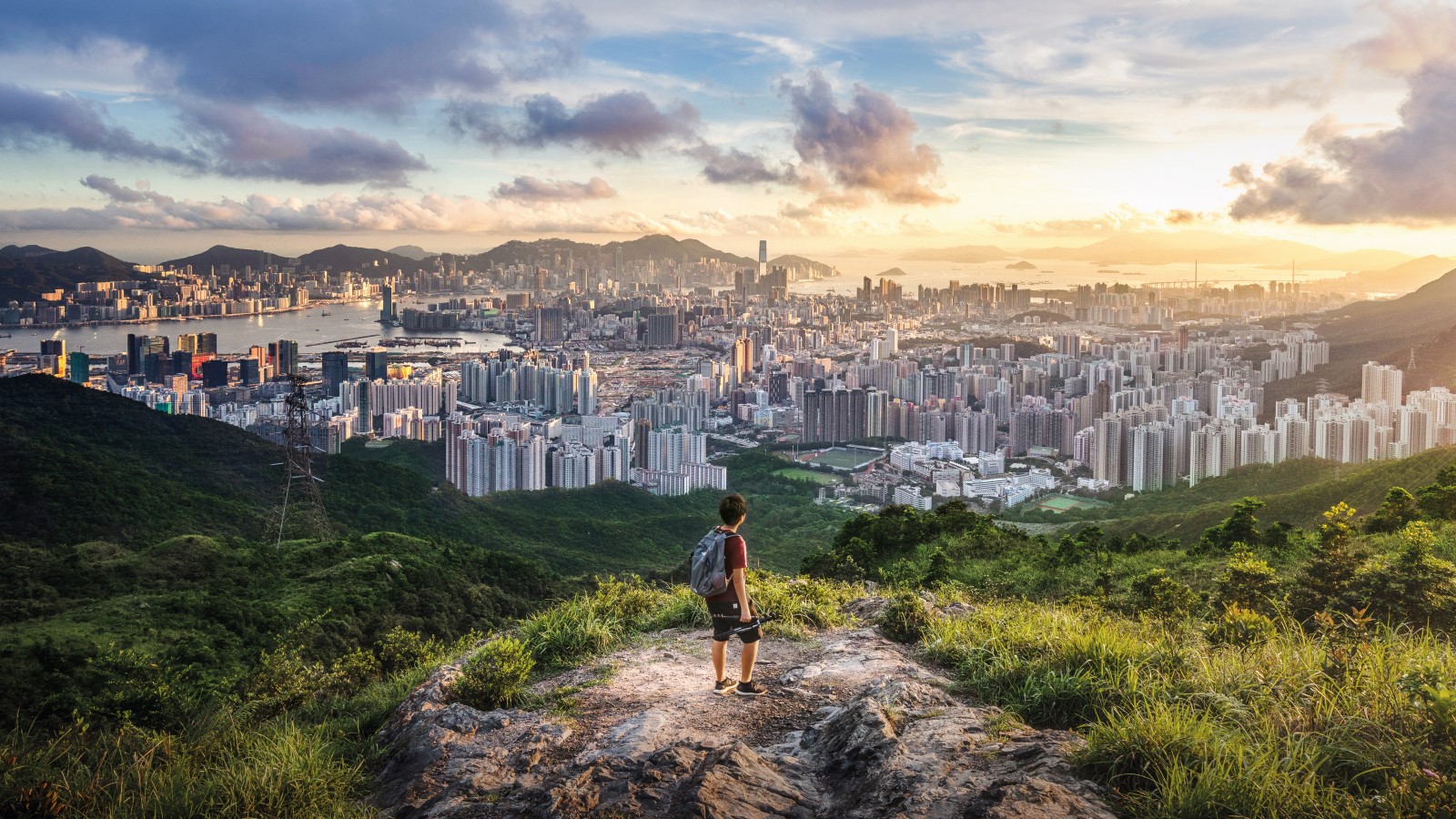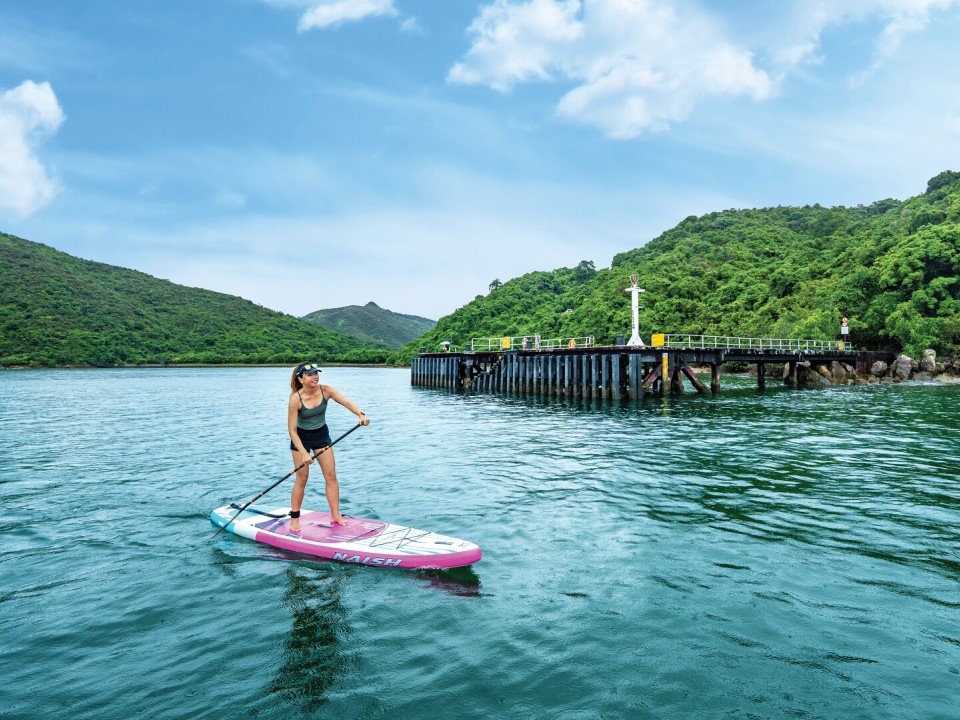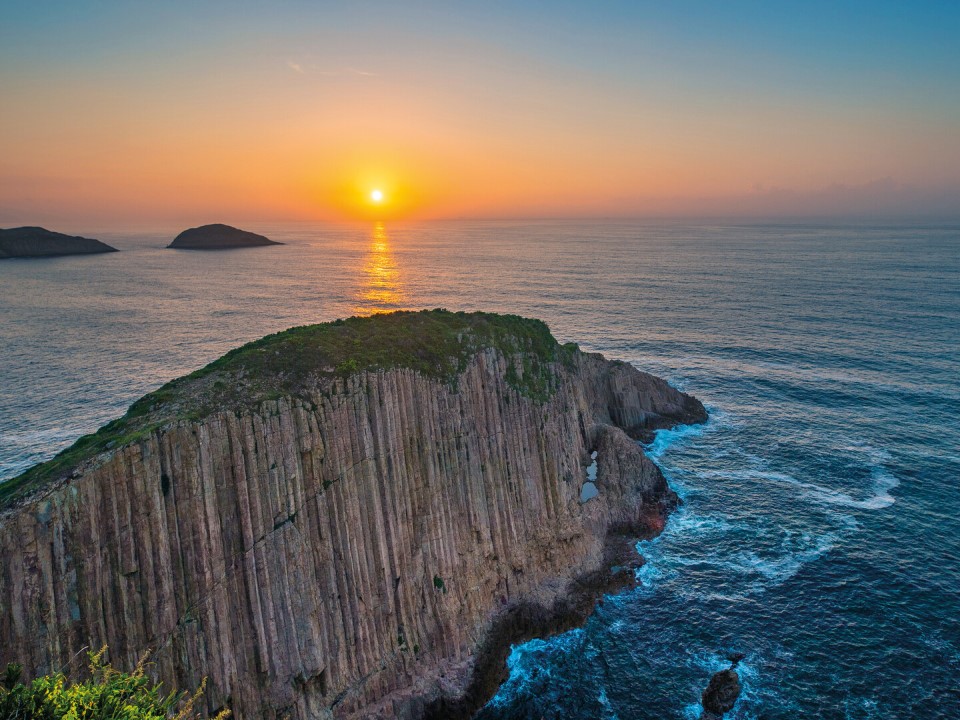Increase of duty-free allowance for luggage articles brought into the Mainland by Mainland residents travelling from Hong Kong takes effect from 1 July 2024. Click here for details.


Cycling in Hong Kong
Tuen Mun to Sha Tin / Ma On Shan route
The 60km New Territories “Super Bike Track” cycling track connects Tuen Mun and Ma On Shan in the New Territories. The 11km middle section of the track connecting Yuen Long to Sheung Shui opened in September 2020, completing the longest cycling route in Hong Kong.
The 6 hour route takes the cyclist through ecological beauties of wetlands, parks and mountains and offers diverse cultural history as it passes ancient temples, historic buildings and monuments.
Discover more: https://www.discoverhongkong.com/seasia/explore/great-outdoor/wellness/cycling--tuen-mun-to-sha-tin.html
Cycling on Cheung Chau
Most of Hong Kong’s offshore islands are car-free and the best way to explore the islands is by bicycle. Take a leisurely ride around Cheung Chau and discover why this is one of the most beloved islands in Hong Kong.
Visit the Pak Tai temple (one of the oldest Taoist temple in Hong Kong) on Buddha’s birthday and witness the exciting traditional Cheung Chau Bun Festival where contestants race to the top of three “lucky bun” bun towers.
Although the island was previously known for seafood restaurants and village life, in recent years, many younger people wanting a slower pace of life have moved to call the island home. New hipster, contemporary, Instagrammable cafes and retail shops now dot the streets alongside centuries-old family owned establishments like Kwok Kam Kee, the island’s oldest lucky buns bakery.
Discover more: https://www.discoverhongkong.com/seasia/explore/great-outdoor/wellness/cheung-chau.html

Water and Outdoor Activities
Hong Kong is so much more than just a concrete jungle, and the Hong Kong UNESCO Geopark in Sai Kung is arguably the perfect example of this. Featuring exquisite volcanic rock formations and some of the clearest waters in Hong Kong, the Hong Kong Geopark is the perfect retreat for kayaking and Stand-Up Paddle (SUP) to escape from the hustle and bustle of the city.
Discover the water activities at Sai Kung: https://www.discoverhongkong.com/seasia/explore/great-outdoor/wellness/kayaking.html

Sai Kung
Hong Kong UNESCO Global Geopark
Located in the eastern part of Hong Kong, the Hong Kong UNESCO Global Geopark comprises two geological regions within its single, unified boundary: the Sai Kung Volcanic Rock Region and the Northeast New Territories Sedimentary Rock Region. Two separate clusters of islands and islets, Ung Kong Group and Ninepin Group, featuring globally rare hexagonal rock columns — Formed as the mixture of volcanic ash and lava cooled following a supervolcano eruption 140 million years ago — lie within the Hong Kong Geopark’s Sai Kung Volcanic Rock Region in Hong Kong’s southeastern waters, and they are not to be missed.
Discover more:
Yim Tin Tsai
Did you know that Hong Kong once had a salt producing village that was abandoned in the 1990s? “Yim Tin Tsai”, which translates to ‘small saltpan’ in Cantonese, is an area where Hakka settlers developed salt farms on the island and made their living from its sale. The saltpans were used to dry out the salt before it was used as a prime trading good. However, with international competition, Hakka villagers were eventually priced out of the global market.
Today, the saltpans have been restored and are fully functioning, making it a prominent site for day trippers. The revitalised saltpans are for demonstration purposes only, but the finished product can be taken home as souvenirs by its visitors. In 2015, the historic saltpans earned a UNESCO Asia-Pacific for Cultural Heritage Conservation.
Discover more: https://www.discoverhongkong.com/seasia/explore/great-outdoor/explore-the-local-hakka-culture-yim-tin-tsai.html

Peng Chau
Once a sleepy island, Peng Chau, which literally means flat island – has been revitalized with the new arts enclave on the island. It’s hard to believe that this small island was once a commercial hub, housing factories and small businesses within the island, and was a thriving trading town during the Qing dynasty.
Just a short boat ride away from the Central Ferry Pier, Peng Chau is the perfect idyllic island where you can explore historical treasures along with arts spaces, hipster cafes to dine at and quaint little shops to shop for knick-knacks.
Discover more:
https://www.discoverhongkong.com/eng/explore/great-outdoor/wellness/peng-chau.html

Sha Tau Kok
Being right next to Shenzhen’s Yantian district, Sha Tau Kok was once a Frontier Closed Area which required a permit and a guarantee from a local resident to visit. It has since gradually reopened, and the Sha Tau Kok pier was open to registered local tour groups in June 2022. Built in the 1960s, the pier is the longest pier in the city and visitors can take a ferry ride to explore Lai Chi Wo, Kat O and Ap Chau nearby.
Lai Chi Wo
The enchanting village of Lai Chi Wo is one of Hong Kong’s oldest, largest and best-preserved rural settlements near the New Territories’ northeast coast. The 300-year-old Hakka village is home to 211 hillside homes flanked by the ‘feng shui’ woods and mangrove forest, home to many species of mammals and butterflies.
Discover more: https://www.discoverhongkong.com/seasia/explore/great-outdoor/wellness/lai-chi-wo.html

Kat O and Ap Chau
Just a thirty-minute boat ride away, the tiny Ap Chau and larger neighbour Kat O islands are part of the Hong Kong UNESCO Global Geopark. Ap Chau – "Duck Island" in Cantonese – got its name from the island’s shape which resembles a duck when viewed from the north. Best known for its spectacular, Instagram-friendly ochre-coloured rock formations, including one shaped like a duck’s head with a sea arch forming its ‘eye’, the small island can be explored in under an hour and visitors can hop back onto the boat to the “Crooked Island” of Kat O.
Larger in size, Kat O, a former fishing village, can be explored on foot in approximately four hours. Take a leisurely hike around the island to admire the view from the lookout at Ko Tei Teng which offers views of distant vistas of Yantian, Shenzhen and other regions in the north. Stop by Kat O Tin Hau temple, which was built during the Qing dynasty in 1763 to honour Tin Hau, the ‘Goddess of the Sea’, who protects sailors and fishermen. The view. The temple was listed as a Grade III historic building in 2010. Before you leave, stroll down Kat O’s main street to taste local favourites like Hakka-style braised pork, traditional hand-rolled squid balls etc.
Both islands have a “Story Room” that offers visitors backgrounds of the island’s geographical features and history of the area.
Discover more:
https://www.discoverhongkong.com/seasia/explore/great-outdoor/wellness/ap-chau---kat-o.html

Hiking Trails
Beginner – Lau Shui Heung Reservoir hike
Popularly known as the “sky mirror” in Hong Kong, the Lau Shui Heung reservoir offers tranquil spots that are perfect for Instagram. The hike into the woodlands promises a rewarding hike for nature lovers, as the area is home to more than 200 species of butterflies and rare species of dragonflies including the yellow-spotted Spangled Shadow-emerald (Macromidia ellenae), which is endemic to Hong Kong.
Discover more:
https://www.discoverhongkong.com/seasia/explore/great-outdoor/wellness/lau-shui-heung-hok-tau-reservoirs.html

Hiking Trails
Intermediate – Tai Tam Reservoir hike (Quarry Bay to Repulse Bay)
Although the 10km tag on the trail might sound intimidating, this 2.5hr hike across relatively gentle terrains is not as challenging as it seems. The trail takes hikers from Quarry Bay in the north of Hong Kong island to the beautiful beaches in southern Repulse Bay, cutting through the Tai Tam group of reservoirs.
The journey begins as you enter Mount Parker Road Green Trail and head towards Tai Tam Country Park. The Tai Tam Upper Reservoir Dam is the first dam you will reach in the network of reservoirs – the rest of the dams being Tai Tam Byewash, Tai Tam Intermediate and Tai Tam Tuk Reservoir Dams, which you will pass as the trail progresses. The dams, which were built between 1888 – 1917 to provide drinking water to Hong Kong island, were declared as national monuments in 2009. The Tai Tam trail is also a heritage trail featuring 21 historical bridges, dams and structures.
Emerge from the greenery of the Tai Tam trail into the sunny beaches of Repulse Bay, one of Hong Kong’s most popular seaside destinations.
Discover more:
https://www.discoverhongkong.com/seasia/explore/great-outdoor/wellness/quarry-bay-to-repulse-bay.html

Hiking Trails
Advanced – Wilson Trail Section 9 Hike (Hok Tau Reservoir to Pat Sin Leng)
This high-altitude 10km challenge in the northeastern New Territories rewards you with spectacular views over hillsides, forests and the sea. The country parks contain some of Hong Kong’s most rugged peaks. Exploring them is straightforward thanks to the city’s criss-crossing hiking network, including the Wilson Trail — stretching from Stanley Gap, on Hong Kong Island, to Nam Chung in the New Territories.
The best way to start the hike is from Hok Tau Reservoir situated on the west side of Pat Sin Leng Country Park. Then, follow the Wilson Trail Section 9 trail and hike across the mountain ridge towards Pat Sin Leng ending at descending Pat Sin Leng Nature Trail towards Tai Mei Tuk.
Section 9 follows the Pat Sin Leng — or ‘ridge of the eight immortals’ — ridgeline linking eight peaks named after figures from Chinese folklore. This invigorating journey will ensure you discover a stunningly beautiful, yet surprisingly wild side of Hong Kong few see.
Discover more:
https://www.discoverhongkong.com/seasia/explore/great-outdoor/wellness/wilson-trail-section-9.html


